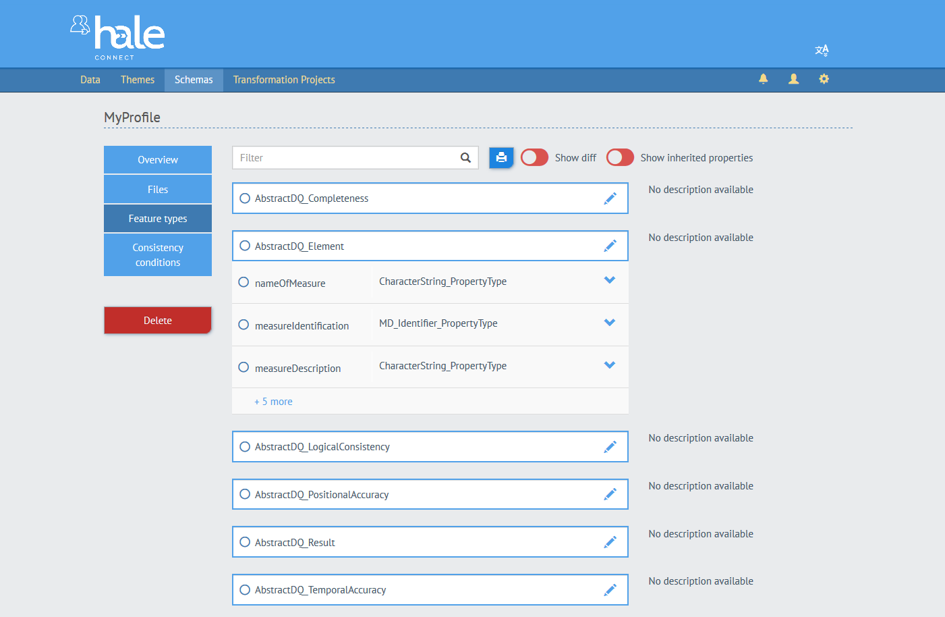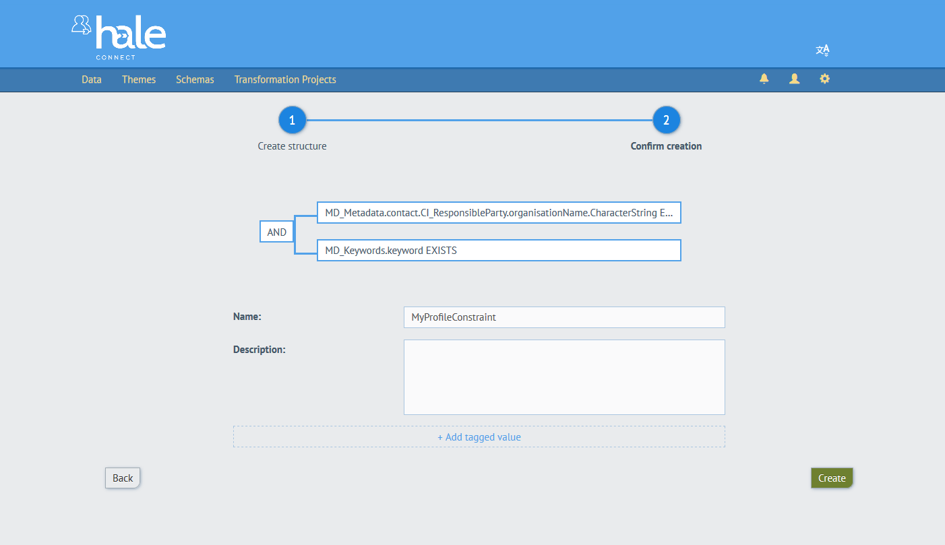
Best Practices of Data Management: Metadata Profile Management
Attend the webinar on April 2nd at 14:00 (CEST)
We’re hosting a webinar in which we’ll demonstrate how to manage complex metadata profiles. We’ll explain the typical challenges, the methods of simplification, go over the profile management processes and demonstrate how to work with hale»connect’s Profile Management Tool (PMT). To inquire or join in, just click the button below and fill in the details mentioned in the email template.
Building a new Metadata Profile
A while ago, we worked with LGL, the geodetic state agency in Baden-Württemberg, to substantially extend hale»connect’s metadata tools. To fulfil their requirements, we developed a formal model that could capture all the required information, as well as a set of editing functions that extend the existing schema modelling tools in hale»connect.
We continued to build upon these developments to make metadata profile management as effective as possible, in order to better support organizations that must implement standards such as ISO 19115.
Such standards are used to define geographical metadata. However, these standards often are too broad and hard to implement for a specific use case. Instead, profiles are used to implement metadata standards. A profile is a subset of a standard. It only describes the relevant aspects of that standard. By using formal descriptions instead of verbal explanations, a profile can also be implemented and automated easier than the original standard.
Often, such profiles are managed in Excel sheets and Word documents. They can be hundreds of pages long. Implementing them into editors and validators can take much effort and be expensive. Updates of data and of the various metadata requirements on the regional, national and European level usually generate inconsistencies with the profiles and increase costs and effort.

The hale»connect Profile Management Tool (PMT) enables you to easily define profiles. You just need to define type constraints (see figure 2) and consistency constraints (see figure 3).

Figure 2: Defining type and property level constraints.

Figure 3: Defining profile consistency constraints.
Understandable documentation and executable test suites and template files are then generated automatically from original data and context information. You do not need to write complex tests in ETF, schematron, XQuery or the like, in order to validate that your metadata complies with your profiles. Hard to understand complex Word or Excel specifications are no longer an issue.
To summarize, the hale»connect PMT
- reduces your costs of development and maintenance of Metadata quality assurance,
- reduces your manual work in editing metadata,
- ensures compliance of your metadata with the metadata requirements at any time and
- helps other SDI contributors to quickly understand what they need to do
Our next webinar will take place on April 2nd at 14:00. In the webinar, we’ll go over the concept of profiles, ETS and ETF validation, and how to create a metadata profile. We’re looking forward to seeing you there and discussing your requirements for such profiles. If you would like to sign up for this webinar, just click on the button below!


